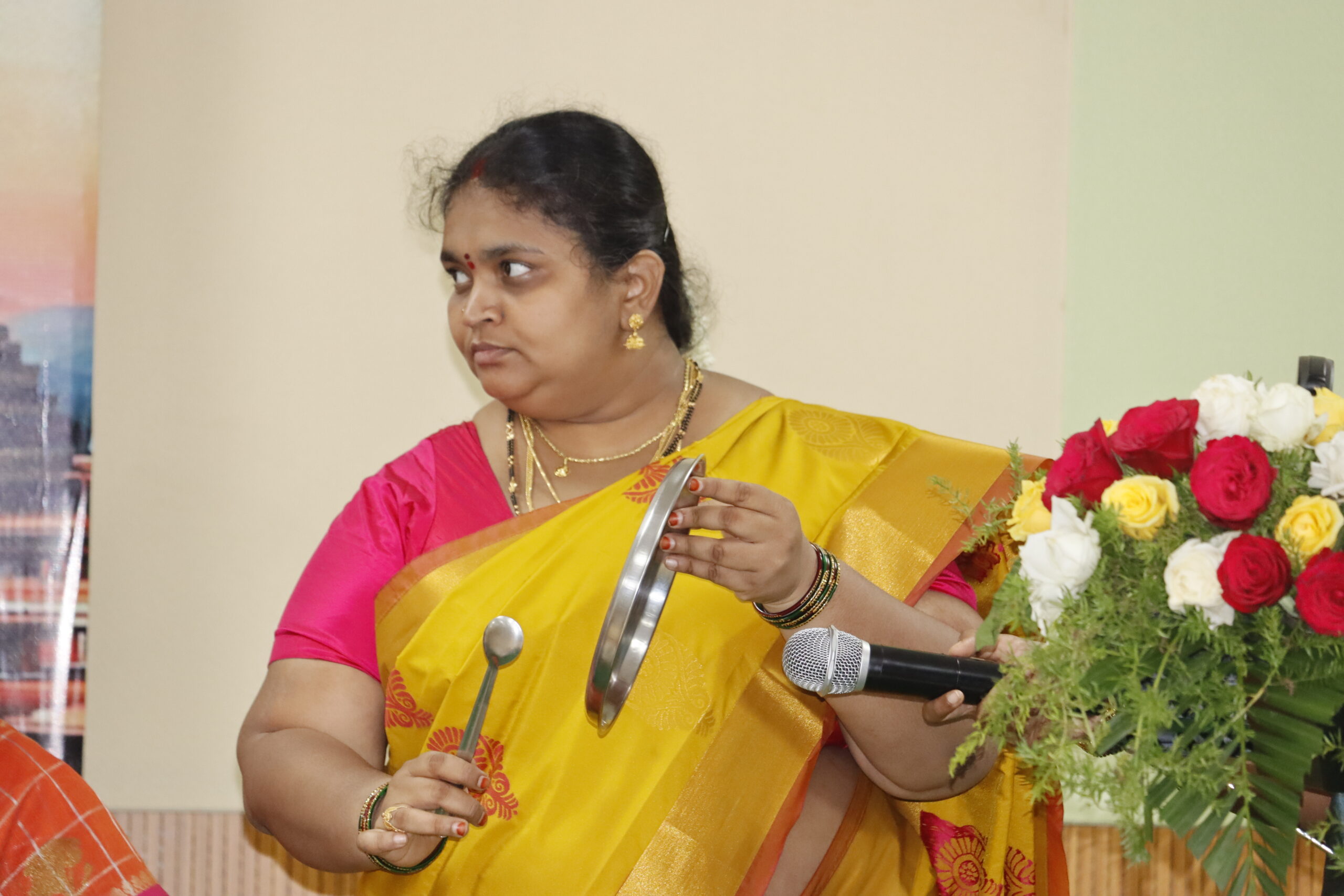In the Avadhāna tradition in Bharat, there exist various forms of Avadhāna of which much is not known. Recently, in the Avadhana Sangama program organised by the Centre for Human Sciences, Rishihood university in collaboration with the National Sanskrit University, Tirupati, we had invited two women Ghaṇṭāvadhāni-s (Dr. Bulusu Aparna and Udaya Chandrika from Andhra Pradesh) for giving a performance of the Ghaṇṭāvadhānam. It is here for the first time I experienced the mesmerizing demonstration of Ghaṇṭāvadhānam by the two extremely talented women who have kept the tradition alive.



Indeed, Ghaṇṭāvadhānam is a hidden gem, a mesmerising art form that beautifully combines the realms of sound, concentration, and linguistic prowess. For those unfamiliar with this mesmerizing practice, I write this article by delving deep into the intricacies and wonders of Ghaṇṭāvadhānam.
The Essence of Ghaṇṭāvadhānam
Ghaṇṭāvadhānam is a unique and awe-inspiring performance art that showcases the extraordinary capabilities of the human mind. At its core, it involves one participant conveying a sentence or verse solely through the sounds created using a plate and spoon. Meanwhile, the other participant, often referred to as the Ghaṇṭāvadhāni, listens with acute attention and accurately reproduces the given sentence based solely on the sounds they hear.
The Artistry Behind the Practice
This art form requires a profound level of focus, concentration, and exceptional listening skills. The Ghaṇṭāvadhāni who receives the sentence must be adept at interpreting the subtle nuances in the sounds created, while the Ghaṇṭāvadhāni who reproduces the sentence must possess remarkable linguistic abilities to decode the auditory cues. The synergy between minds of the two Ghaṇṭāvadhāni-s and the harmony of sound leaves the audience in awe!
The process begins with the communicator selecting a sentence or verse and passing it on to one of the two Ghaṇṭāvadhāni-s on the stage ready to perform. Then the Ghaṇṭāvadhāni who receives the message creates distinct sounds on a plate using a spoon, each sound corresponding to a specific syllable or element of the sentence. The other Ghaṇṭāvadhāni receives the sounds, deciphers them and recreates the given message accurately. Please note that here language is not a barrier. One can provide the message in any language.
The Astonishing Result
What makes Ghaṇṭāvadhānam truly mind-blowing is the precision and accuracy with which the sentence is conveyed and reproduced. It serves as a testament to the incredible power of the human mind and its ability to process and interpret complex auditory information. The communication transcends the boundaries of spoken language and relies purely on the nuances of sound – no matter whatever the language may be.
The Cultural Significance
Ghaṇṭāvadhānam is a cultural treasure that has been passed down through generations in Bharat. It exemplifies the country’s deep-rooted traditions of art, language, and intellectual pursuits. The performers not only display remarkable skill but also preserve and promote the cultural heritage of Bharat.
Appreciating Ghaṇṭāvadhānam
Ghaṇṭāvadhānam is a true marvel that deserves recognition and appreciation on a broader scale. It highlights the incredible capabilities of the human mind and the beauty of artistic expression. As spectators, we can marvel at the dedication and talent of those who practise this art form.
In a world where technology often dominates our senses, Ghaṇṭāvadhānam reminds us of the power of the human mind and the rich cultural diversity that Bharat offers. It’s a reminder that art, in all its forms, continues to thrive and evolve, transcending the boundaries of time and technology.
So, the next time you come across the term Ghaṇṭāvadhānam, take a moment to appreciate the intricate dance of sound and mind that unfolds within this remarkable art form. It’s a testament to the boundless potential of human creativity and a reminder of the wonders that can be achieved when tradition and innovation intersect. Ghaṇṭāvadhānam truly showcases the limitless power of the human mind.
PS: As a part of the Avadhānakalā and Consciousness Studies project at the Centre for Human Sciences, Rishihood University, our attempt has been to discover the various types of avadhāna-s still in practice today. We express our gratitude to the IKS Division of the Ministry of Education, Govt. of India for their support in carrying out this research work.
– Prof. Sampadananda Mishra, Director, Centre for Human Sciences

